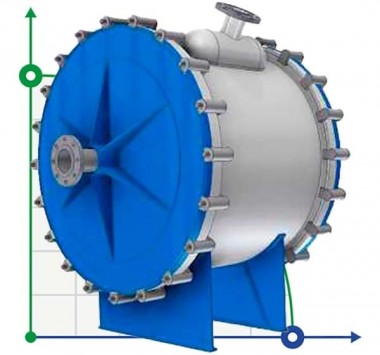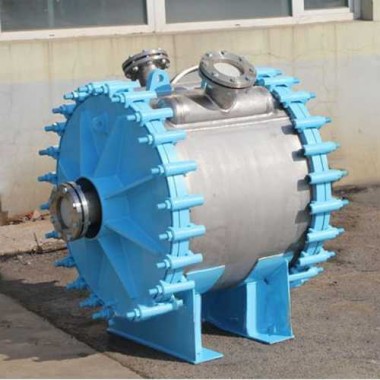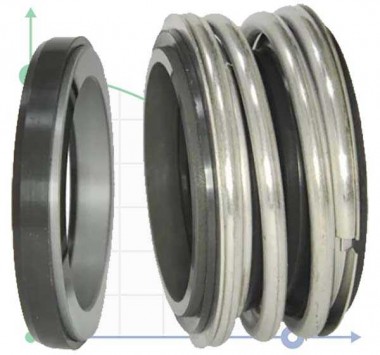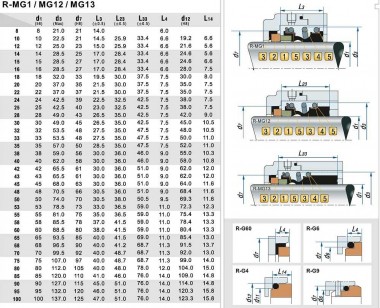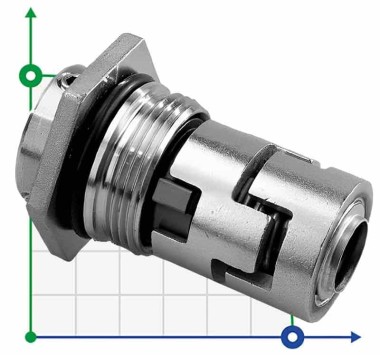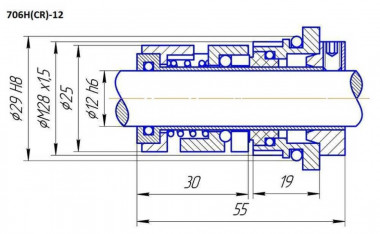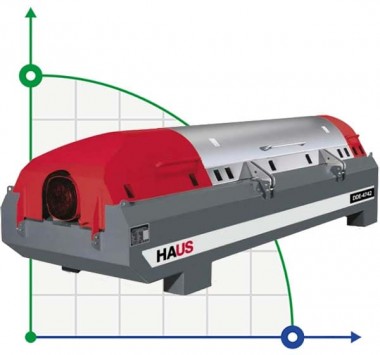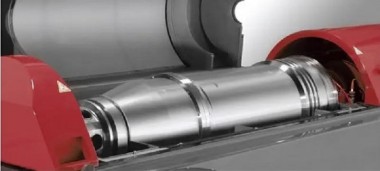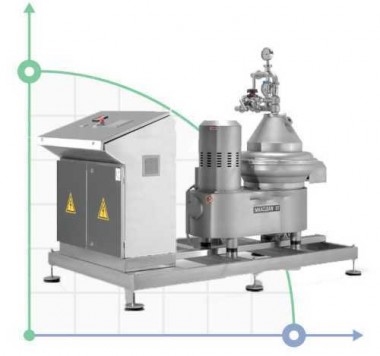- Bitumen pumps
-
Dosing equipment
-
Sensors and electrodes
- Stream sensor ETATRON
- PH sensors / electrodes
- Rx Level Sensors / Electrodes (RedOx, ORP)
- Output flow sensors
- DCL Chlorine Dioxide Sensors
- Turbidity sensors TURBIDITY
- Peracetic Acid Sensors PA
- Ozone sensors
- HP Hydrogen Peroxide Sensors
- Dissolved oxygen sensors ET-OXY1
- Temperature sensors PT100
- Reagent level sensors
-
CL chlorine sensors
- Amperometric holder with chlorine sensor SCLO 3 HYCHLOR
- Chlorine sensor SCLO 3 HYCHLOR without housing
- Total chlorine sensors TC
- FIC free chlorine sensors
- FIC PW free chlorine sensors for drinking water
- Free Chlorine FIC /FOC Sensors
- Replacement membranes for chlorine sensors
- Signal adapter cable for SCLO 3 HYCHLOR chlorine sensor, with BNC connector
- PYREX ball kit for SCLO3 HYCHLOR chlorine sensor
- Connecting cables for SONDA CL chlorine sensors, with BNC connector
- Chlorine Sensor Electrolytes
- CD conductivity sensors
- Sensor Holders
- Pulse Flow Meters
-
Controllers (fluid analyzers)
- ECONTROL Liquid Analyzers
- ESELECT and AG-SELECT high precision liquid analyzers
- Dissolved oxygen controller AG-S /Control OXYGEN
- Acetic acid controllers
- Level controllers CL
- Rx Level Controllers (ORP)
- PH controllers
- Conductivity controllers CD
- Turbidity controllers AG-S /Control TURBIDITY
- DIN rail parametric controllers, panel
- ePHOTON Photometric Analyzers
-
Diaphragm motor pumps
-
Accessories and spare parts for diaphragm pumps D and ST-D
- Pulsation dampers AISI 316L / PVC for diaphragm pumps D and ST-D
- Inverters - variable frequency drives 4-20 mA for diaphragm pumps D and ST-D
- Reagent injection valve for diaphragm pumps D and
- AISI 316L / PVC pump head intake / discharge valve for diaphragm pumps D and ST-D
- Reagent intake valve for diaphragm pumps D and ST-D
- Suction and discharge valve kits for diaphragm pumps D and ST-D
- Diaphragms for Diaphragm Metering Pumps Series D and ST-D
- Bypass (pressure reducing) valves for diaphragm pumps D and ST-D
- Safety valves for diaphragm pumps D and ST-D
- Servo drive 4-20 mA for diaphragm pumps D and ST-D
- Diaphragm motor pumps ST-D
- Explosion-proof diaphragm motor pumps ATEX
- Motorized diaphragm pumps D
-
Accessories and spare parts for diaphragm pumps D and ST-D
- Mixers, hand mixers
-
Metering pumps
-
Accessories and spare parts for metering pumps
-
Diaphragm dosing pump heads
- PLEXIGLAS 2-15, 20, 50 L head - (Type G)
- PP head 1-15 l /h - (Type A)
- PP head 20 l /h - (Type B)
- PVC head 20 bar - (Type C)
- PVC head 30-50-80 l - (Type D)
- PVDF head 1-15 L - (Type E)
- Head PVDF A 5-15 L - (Type F)
- Head PVDF A eONE 1-15 l /h - (Type L)
- Head PVDF eONE 1-15 l /h - (Type H)
- PVDF eONE head 20-30 l /h - (Type I)
- Injection valve
- Intake valve
-
Diaphragm dosing pump heads
- eTWIN double metering pumps
- Dosing pumps DLX
- Diaphragm solenoid pumps DLXB
- PKX Reagent Dispenser Pump
- Solenoid metering pumps eONE
- BT Electromagnetic Dosing Pumps
-
Accessories and spare parts for metering pumps
- Peristaltic (hose) pumps
-
Plunger pumps
-
Accessories and spare parts for plunger pumps P and ST-P
- Pulsation dampers AISI 316L /PVC for plunger pumps P and ST-P
- Inverters - variable frequency drives 4-20 mA for diaphragm pumps D and ST-D
- Reagent injection valve for plunger pumps P and ST-P
- AISI 316L / PVC pump head intake / discharge valve for plunger pumps P and ST-P
- Valves for reagent intake to plunger pumps P and ST-P
- Suction and discharge valve kits for plunger pumps P and ST-P
- Plunger gasket kits for P and ST-P plunger pumps
- Bypass (pressure reducing) valves for plunger pumps P and ST-P
- Safety valves for plunger pumps P and ST-P
- Servo drive 4-20 mA for plunger pumps P and ST-P
- ST-P Plunger Pumps
- P plunger pump
-
Accessories and spare parts for plunger pumps P and ST-P
-
Application
- Protection of boiler equipment and networks
- Pump for the petrochemical industry
- Pump for the food industry
- Paper pump
- Solvent pump
-
Acid pumps
- Nitric acid pump
- Benzoic acid pump
- Boric acid pump
- Tartaric acid pump
- Citric acid pump
- Lactic acid pump
- Peracetic acid pump (peroxyacetic acid, peracetic acid)
- Oleic acid pump
- Palmitic acid pump
- Perchlorate acid pump
- Sulfuric acid pump
- Hydrochloric acid pump
- Acetic acid (ethanic acid) pump
- Phosphoric acid (orthophosphoric acid) pump
- Chromic acid pump
- Oxalic acid pump
- Malic acid pump
- Pumps for pharmaceuticals
- Chemical pumps
- Lye pumps
- Dosing pumps in the production of alcoholic and non-alcoholic beverages
- Metering pumps in the construction industry
-
Dosing pumps for water treatment
- Coagulant pump
- Flocculant pump
- Technological scheme for automation of sodium hypochlorite (NaCL) dosing
- Technological scheme for dosing NaCL and monitoring the dose of residual chlorine
- Sodium hypochlorite (NaCL) dosing flow chart in proportion to water consumption
- Process flow diagram for chemical deaeration of water and pH control
- Dosing pumps for water deferrization
- Dosing pumps for sugar production (sugar factories)
- Dosing pumps and controllers in waste water treatment
- Dosing pumps and controllers in the greenhouse industry
-
Metering pumps in the alcohol industry
- Formalin dosing
- Dosing system for sulfuric or hydrochloric acid when acidifying molasses
- Dosing scheme for the enzyme preparation-amylase at a distillery 3000 dal / day
- ¶Dosing scheme for the enzyme preparation glucoamylase at a distillery 3000 dal / day
- Scheme of acid supply by a plunger pump with a dispenser during CIP-washing of the column 3000 dal/d
- Sulfuric acid supply scheme when optimizing the pH level in a yeast generator at a distillery
- Pool equipment
- Reservoirs, tanks, protective pallets, calipers (plates)
- Dosing systems for cleaning and hygiene
-
Dosing and control systems
- EONE GUARD dosing and monitoring system for PH, Rx PH, Rx and chlorine CL
-
Dosing systems POOL GUARD for swimming pools
- Automatic pool station - POOL TOP GUARD PH / RX /
- PH Automatic Dosing Station - PH CONTROL 1
- Automatic control and dosing station PH and RX - POOL GUARD 1 PH/RX
- Automatic Water Disinfection Systems - POOL GUARD 3 PH/CL (SCLO3 HYCHLOR)
- Professional dosing and control system POOL GUARD MAX PH/RX/T/CL free/CL total (SONDA CL)
- Water disinfection system - POOL GUARD 3 PH/CL (SONDA CL)
- Chlorine dioxide monitoring systems
-
Dosing control and management systems
- Monitoring and control system PH-CL-F CONTROL PANEL
- Monitoring and control system for PH, RX and free chlorine PH-RX-CL-F CONTROL PANEL
- Regulation and control system PH-RX CONTROL PANEL
- Regulation and control system PH-RX-F CONTROL PANEL
- Control system for monitoring the levels of PH, RX and residual chlorine CL (A) -PH-RX-F CONTROL
- Free Chlorine Control and Monitoring System CL-F CONTROL PANEL
- POOL GUARD MINI dosing and pH / Rx control station
- Dosing stations for swimming pools with peristaltic pumps
-
Sensors and electrodes
- Drainage and fecal submersible pumps
- Mixers, stirrers
- ALPHADYNAMIC pumps
-
Pumps DEBEM
-
Pump accessories
- IM filter
- Anti-vibration mounts
- Reinforced hose
- Quick release fittings
- Suction valve (check valve)
- Suction filter
- Valve
- Shut-off valve with solenoid
- Protective pre-filter (prefilter)
- Dispensing gun
- Flow meter
- Air regulator for pneumatic pumps
- Pulse counter (pulse controller)
- Cycle counter
- Pump trolley
- Flange connections (flanges)
- Hose for MP peristaltic pump
- Barrel pumps - TR
-
Vertical Semi-Submersible Pumps - IM
- Vertical pump IM 80
- IM 90 vertical centrifugal pump
- Semi-submersible centrifugal pump IM 95
- Semi-submersible vertical pump IM 110
- Chemical semi-submersible pump IM 120
- Chemical vertical pump IM 130
- Vertical chemical pump IM 140
- Semi-submersible pump IM 150
- Semi-submersible chemical pump IM 155
- Semi-submersible chemical pumps IM 160
- Galvanic pump IM 180
- Electric semi-submersible pump IM 200
-
Horizontal centrifugal pumps - MB
- Horizontal chemical pump MB 100
- Horizontal centrifugal pump MB 120
- Centrifugal chemical pump MB 140
- Chemical pump MB 160
- Chemical pump for acids and alkalis MB 110
- Chemical plastic pump MB 155
- Chemical centrifugal pump MB 80
- Centrifugal chemical pumps MB 180
- Centrifugal pump MB 130
- Horizontal centrifugal pump MB 150
- Double Diaphragm Pumps - FULLFLOW
-
Pulsation dampers - EQUAFLUX
- Automatic membrane damper EQUAFLUX 100
- Food grade pulsation damper FOODEQUAFLUX 302
- Membrane pulsation damper EQUAFLUX 302
- Food-grade pulsation damper FOODEQUAFLUX 100
- Food grade pulsation damper FOODEQUAFLUX 200
- Pulsation damper food grade FOODEQUAFLUX 51
- Diaphragm pulsation damper EQUAFLUX 303
- Membrane pulsation damper EQUAFLUX 51
- Pneumatic pulsation damper EQUAFLUX 200
-
Spare parts
- Spare parts for TR barrel pumps
- Spare parts for pumps BOXER, MICROBOXER, FPC 100, MINIBOXER
- Spare parts for pumps DM
- Spare parts for pumps FOODBOXER
- Spare parts for pumps FULLFLOW
- Spare parts for IM pumps
- Spare parts for pumps MB
- Spare parts for pumps MIDGETBOX, CUBIC 15
- Spare parts for pumps SANIBOXER
- Spare parts for MP peristaltic pumps
- Air compressor
-
DEBEM pneumatic diaphragm pumps
- Pneumatic pump BOXER 7
- Diaphragm pump BOXER 15
- Diaphragm pump BOXER 50
- Diaphragm pneumatic pump BOXER 81
- BOXER FPC 100 pump made of PTFE
- Pneumatic diaphragm pump BOXER 100
- Diaphragm pump BOXER 150
- Diaphragm positive displacement pump BOXER 251
- Diaphragm pump of high performance BOXER 502 Metal
- Pneumatic diaphragm pumps BOXER 503
- Pneumatic Diaphragm Pumps BOXER 503 Metal
- Diaphragm pump with pneumatic drive BOXER 522
- Diaphragm pump MICROBOXER
- Pneumatic diaphragm pump MINIBOXER
- Diaphragms for BOXER pumps
- Internal arrangement of BOXER pumps
- Basic types of BOXER installation
- Operating conditions of BOXER pumps
- Agitators and mixers
- Magnetic Drive Pumps - DM
- Peristaltic Pumps - MP
-
Food hygienic pumps FDA - FOODBOXER
- Internal structure of FOODBOXER pumps
- Hygienic food pump FOODBOXER 150
- Diaphragm transfer pump FOODBOXER 251
- Diaphragm food pump FOODBOXER 30
- Membrane food pump FOODBOXER 50
- Membrane food pump FOODBOXER 100
- Diaphragms for pumps FOODBOXER
- Food diaphragm pumps FOODBOXER 80
- Basic types of FOODBOXER installation
- High performance food pump FOODBOXER 502
- Food pneumatic pump FOODBOXER 503
- Operating conditions of FOODBOXER pumps
- Pneumatic Pumps - CUBIC
- Pharmaceutical sanitary pumps 3A - SANIBOXER
- Magnetic Drive Centrifugal Pumps - KM
-
Pump accessories
- Ex ATEX pumps
- Power take-off (PTO) pumps for a tractor
- Pumps for UAN (urea-ammonia mixtures)
- Pumps for SPS
- Alcohol pumps
- Thermal oil pumps
- Application examples for industrial pumps
-
Radial piston pumps
-
AXIAL PISTON PUMPS ADJUSTABLE ON… 74M…
- PUMP NAG 74M 224/32
- PUMP NAG 74М 90/32
- PUMP NAD1 74М 224/32
- PUMP NAD1 74М 90/32
- PUMP NAD1 F 74М 224/32
- PUMP NAD1 F 74М 45/32
- PUMP NAD1 F 74М 90/32
- PUMP NAM 74М 224/32
- PUMP NAM 74М 90/32
- PUMP NAM F 74М 224/32
- PUMP NAM F 74М 45/32
- PUMP NAM F 74М 90/32
- PUMP NAR 74М 224/32
- PUMP NAR 74М 90/32
- PUMP NAR F 74М 224/32
- PUMP NAR F 74М 45/32
- PUMP NAR F 74М 90/32
- PUMP NAS 74М 90/32
- Non-adjustable radial piston pumps, HP2 type
- ADJUSTABLE RADIAL PISTON PUMPS TYPE 50NRR
-
AXIAL PISTON PUMPS ADJUSTABLE ON… 74M…
- Ferroni Roller Pumps
Dosing pumps for water deferrization
Dosing pumps for water deferrization
- Dosage of oxidants
- Dosage of sodium hypochlorite (NaCl)
Sodium hypochlorite effectively disinfects water. Being unstable in a solid state, it is stored and transported in the form of an aqueous solution, and dosing pumps are used for dosing it. Sodium hypochlorite is used for water treatment in centralized and autonomous water supply systems.
For dosing sodium hypochlorite, membrane, peristaltic, plunger pumps are used.
The use of reagent deferrization of water based on the dosage of oxidants (sodium hypochlorite (NaCl)).

Installation components:
- Dispenser pumpDLX VFT /MBB 1-15
- Reagent container V=60L.
- Impulse flow meter 3/4 "
- Sediment filter:
- filter housing;
- Control block;
- filter material; - Carbon filter:
- filter housing;
- Control block;
- filter material (coconut activated carbon)
An oxidizing agent is dosed into the outgoing water flow (the dose is calculated on the basis of water analysis) usingmetering pump DLX VFT /MBB 0115, the signal to turn on the dispenser comes from a 3/4 "impulse flow meter installed after the filters. Treatment of water with oxidants leads to the decomposition of organic complexes, oxidation of manganese and iron and intensive coagulation of oxidized compounds. In addition, oxidants disinfect water.
Further, all oxidized elements are deposited on a sediment filter (the principle of operation is reagent-free deferrization). Since it is difficult to calculate the exact dosage of oxidants (depending on water consumption and seasonal fluctuations in water indicators), at the last stage, a carbon filter is used to delay the residual concentrations of oxidants.
As filtering materials, activated carbon obtained from coconut shells is used, which provides the following characteristics: mechanical strength, large internal surface area, the ratio of transport and working (macro-, meso- and micro) pores, the amount of adsorption.
The regeneration mode of the charcoal filter is automatic. At the moment of fluffing (backwashing), accumulated impurities are washed into the drainage.









